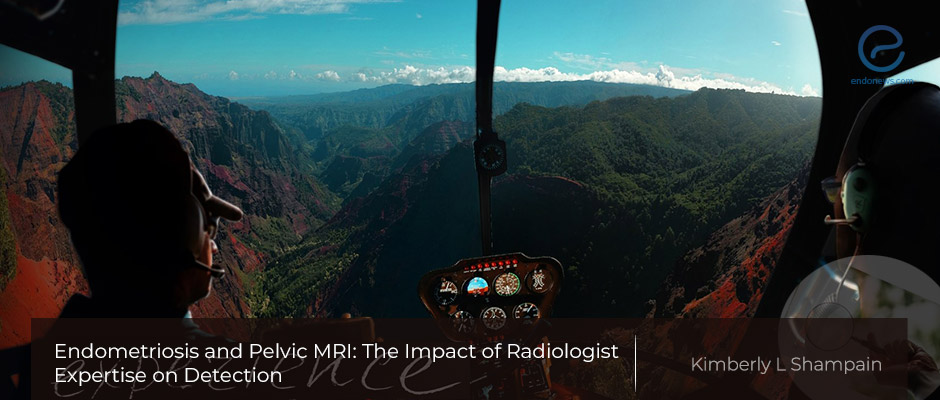Pelvic MRI, Endometriosis and Radiologist
Nov 24, 2020
Importance of Radiologist's Expertise for Endometriosis Diagnosis
Key Points
Importance:
- Skilled radiologists, preferably who have training in female pelvic imaging, are crucial for the accurate diagnosis and surgical planning of complex endometriosis.
Highlights:
- Various experience levels of the radiologists shape differently the diagnostic outcome of pelvic MRI in the assessment of deep pelvic endometriosis.
What’s done here:
- The article highlights the importance of experience-driven radiology training when diagnosing endometriosis.
Key Results:
- The study by Bruyere et al. compared the diagnostic performance of the diagnostic radiology resident, fellow, and attending, all with various levels of experience in interpreting endometriosis, on pelvic MRI.
- Readers of all levels were found to have "satisfactory" diagnostic performance when evaluating for endometriomas, with [85.7 to 100%] sensitivity, and[84.2 to 93.3%] specificity.
- However, for deep pelvic endometriosis interpretation, a much larger variation was seen when comparing the attending to the fellow or junior resident.
Strengths and Limitations:
- Strength is being the first study to openly and directly report on the role of the experience level of the interpreting physician in endometriosis detection on pelvic MRI.
- The case number is relatively small, and only the patients with a high probability of endometriosis were operated on.
Lay Summary
Endometriosis is a condition whereby ectopic endometrial cells implant themselves onto other structures within the body. Depending on where these lesions are, their size, and if they cause symptoms, surgical intervention may be warranted. Although the gold standard for diagnosing endometriosis continues to be diagnostic laparoscopy with histologic confirmation via biopsy, the first-line imaging to assess whether patients have structural abnormalities in the pelvis is Ultrasound. Pelvic MRI is additionally used in cases where the complex endometriotic disease is suspected or for pre-surgical planning.
Endometriotic deposits that invade the peritoneum by more than 5mm are known as deep pelvic endometriosis and can be seen to involve many pelvic structures such as the bladder, digestive tract, vagina, urinary tract, and other extraperitoneal areas. The diagnosis of deep pelvic endometriosis can be a challenge in patients who have had other inflammatory conditions either from pelvic inflammatory disease, previous abdominal surgeries, and complicated diverticulitis. Thus, the interpreting radiologist should have a high level of experience in interpreting these images.
One study that was evaluated in this article, titled "Pelvic MRI for endometriosis: spectrum of disease" by Bruyere et al. compared the diagnostic performance of the diagnostic radiology resident, fellow, and attending, all with various levels of experience in interpreting endometriosis, on pelvic MRI.
The authors found that the readers of all levels were found to have "satisfactory" diagnostic performance when evaluating for endometriomas (endometriosis of the ovary) with sensitivities ranging from 85.7 to 100% and specificities ranging from 84.2 to 93.3%. However, for deep pelvic endometriosis, a much larger variation was seen when comparing the attending to a fellow or junior resident interpretation.
The article thus wishes to point out that the interpretation of endometriosis, especially in cases with complex disease, including deep pelvic endometriosis, should be made by radiologists with the necessary experience in female pelvic imaging.
"Obtaining an accurate diagnosis with MRI is crucial as it can affect the surgical planning of endometriosis, and this should be performed by expert readers in female pelvis imaging, especially concerning the deep pelvic endometriosis. While institutions providing education to future radiologists should insist on female pelvic imaging, clinicians should refer their patients to the radiologists with adequate experience in the domain." concluded the authors.
Research Source: https://pubmed.ncbi.nlm.nih.gov/32972838/
Endometriosis MRI radiology

